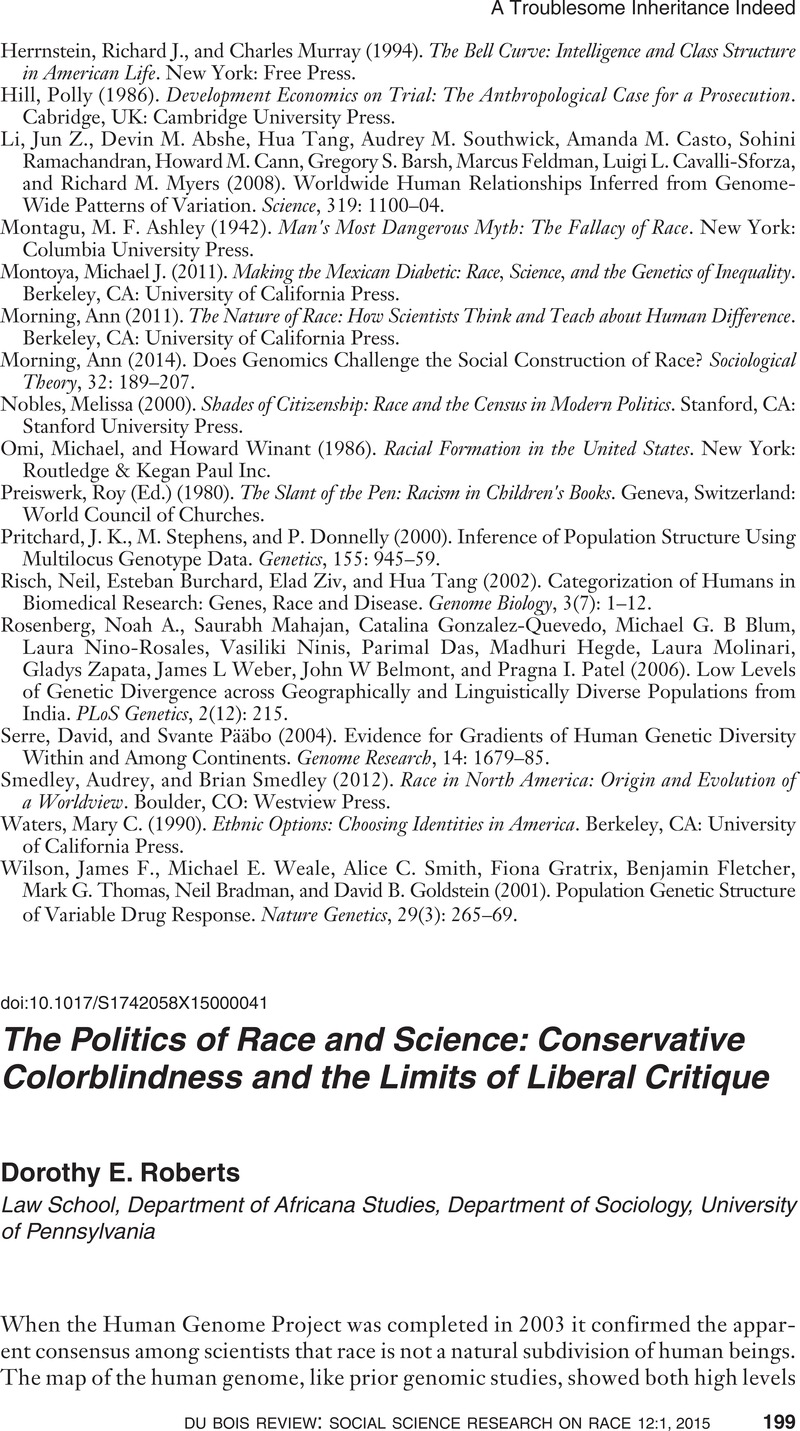Crossref Citations
This article has been cited by the following publications. This list is generated based on data provided by Crossref.
Beaman, Jean
and
Petts, Amy
2020.
Towards a global theory of colorblindness: Comparing colorblind racial ideology in France and the United States.
Sociology Compass,
Vol. 14,
Issue. 4,
Cook, William S.
2021.
The intelligence concept and racial classification as sociological products of Western education.
Sociology Compass,
Vol. 15,
Issue. 12,





